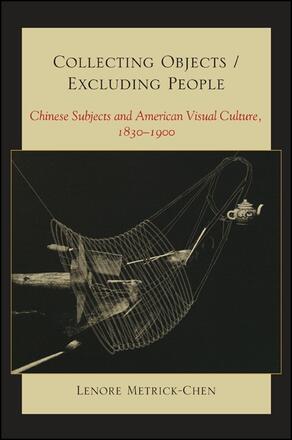Illustrations and Credits
Acknowledgments
Introduction
1. The Politics of Chinoiserie: The Disappearance of Chinese Objects
Section I. The Early Nineteenth Century
The Presence of Chinese Objects in the United States
Opium, Politics, and American Perceptions of the Chinese
The Chinese in the United States
Americans Assess China’s Artistic Ability
The Influence of the Chinese Aesthetic on American Art
Section II. The Late Nineteenth Century
Regarding “Oriental”: Whose Aesthetic Is It
American Confusion of Japanese and Chinese Objects
Politicized Perceptions of the Chinese
Politics Become Aesthetic Criteria
2. The Power of Inaction: Chinese Objects and the Transformation of the American Definition of Art
Section I. Chinese Objects and the Aesthetics of Museums
Aesthetic Morality and Nationalism, America’s Ruskin-Based Art
The Education Premise: Inaugurating Two American Art Museums
Expanding the Canon of Art; Plaster Casts as an Art Form
Section II. Chinese Objects and the Business of Museums
Art Museums Founders and the Issues of the Public
Museums, Art, and Commodities
Merchandising Art
The Change of Paradigm
3. From Class to Race: The New York Times Reconstructs “Chinese”
Section I. A Brief Historical Contextualization
Introduction
Newspaper History and The New York Times
A Glance at History of Labor, Politicians, and Anti-Chinese Agitation
Section II. Creating a “Them”: The Strategies of Demonization
Part Becomes the Whole: Turning Chinese into Coolies
Hordes
Heathen
Barbarity and Contamination
Sex and Drugs
Ignorance
Effeminizing the Chinese Men
Chinese into Coolies into Demonized Race
Section III. Defining the “Us”: The Exclusion Debate: Four Voices Struggle Over Imaging Chinese
The Exclusion Debate: Four Voices Struggle Over Imaging Chinese
The Opposing Race Arguments form the Congressional Debates
The Times Doublespeak: Blame California, Profess Fatigue
The Chinese View through Word and Action
4. The Chinese of American Imagination: Nineteenth-Century Trade Card Images
Section I: Trade Card Images
Section II: The Politics of Chromolithography
Power Struggles Over Definitions of Art
Between Two Worlds: The Dual Role of Trade Cars
An Addition to Visual Language: Floating Signifiers
Section III. The Chinese Figure as Outsider
Dislodged Objects as a New Art
Paper Nations
The Safety of Exotic Distance
Section IV. The Chinese Figure and American Self-Definition
American, Un-American
Disjunctions, and Collisions: The Iconography of Displacement
Hybridity, Cultural Margins, and Incorporation
Conclusion
Notes
Name Index
Subject Index
